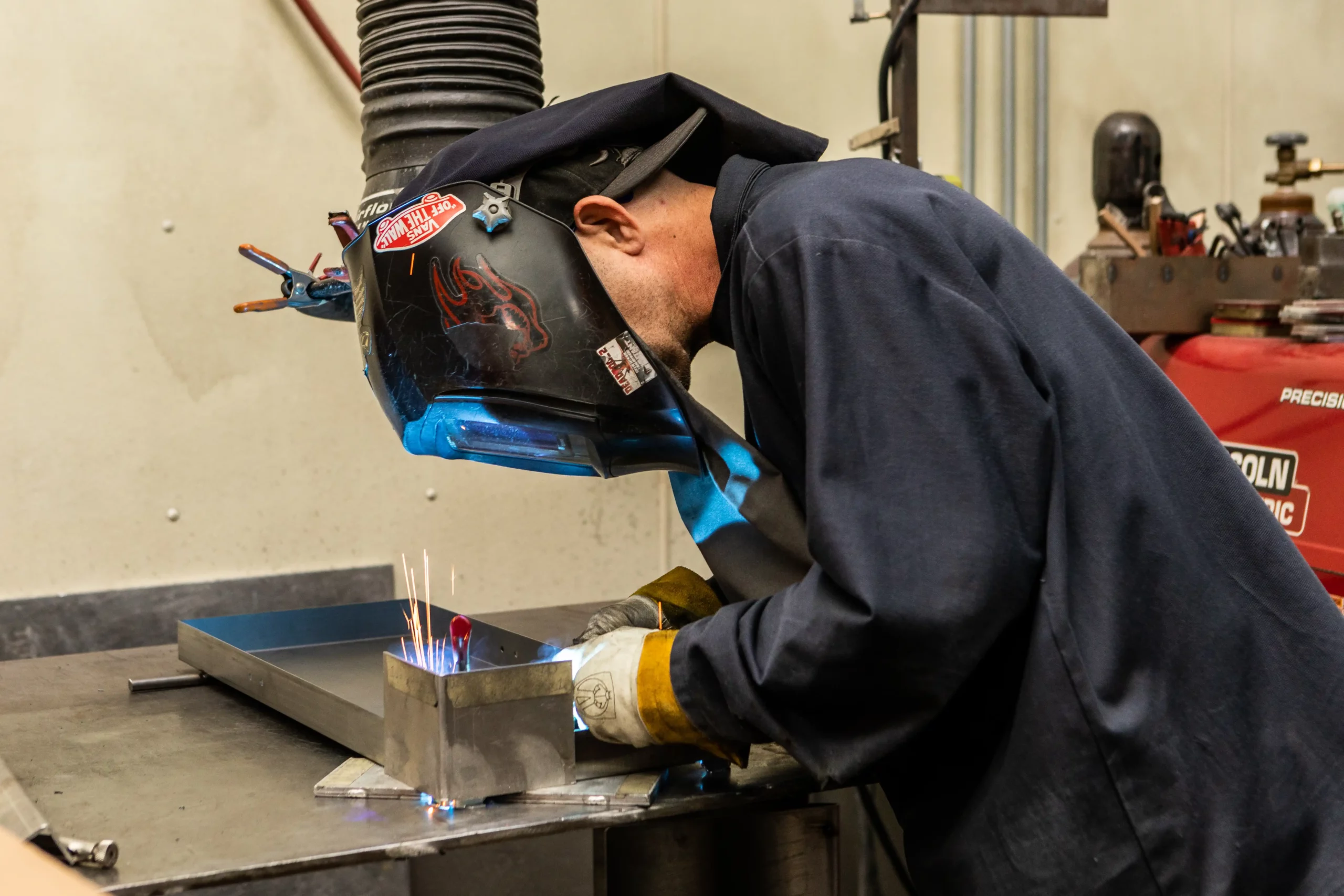Getting Welding Quality: Introducing the Keys of WPS Application and Optimization
In the realm of welding, accomplishing excellence is a search that depends upon the meticulous application and optimization of Welding Treatment Specs (WPS) These fundamental files act as the backbone of welding procedures, dictating the treatments and parameters required for producing high-grade welds regularly. However, the tricks to unlocking the full capacity of WPS lie not just in recognizing its importance but likewise in mastering the intricacies of its implementation and optimization. By delving into the crucial elements, techniques, difficulties, and ideal methods associated with WPS, a world of welding excellence waits for those that want to discover its midsts.
Significance of WPS in Welding
The Importance of Welding Procedure Specs (WPS) in the welding industry can not be overstated, acting as the backbone for making certain consistency, top quality, and security in welding operations. A WPS supplies in-depth instructions on exactly how welding is to be accomplished, consisting of essential variables such as materials, welding procedures, joint layout, filler steels, interpass and preheat temperature levels, welding currents, voltages, traveling rates, and much more. By adhering to a well-defined WPS, welders can preserve uniformity in their job, resulting in constant weld quality across various tasks.

Crucial Element of WPS
Talking about the important elements of a welding procedure specification (WPS) is essential for understanding its duty in welding operations. One vital aspect of a WPS is the welding process spec, which lays out the specific welding processes to be utilized, such as gas tungsten arc welding (GTAW) or shielded metal arc welding (SMAW) By integrating these essential elements into the WPS, welding treatments can be standard, making certain quality, efficiency, and safety and security in welding procedures.
Strategies for WPS Optimization

Secondly, training and qualification of welding employees according to the details requirements of the WPS is extremely important. Supplying comprehensive training programs and guaranteeing that welders are accredited to implement treatments detailed in the WPS can bring about higher high quality welds and reduced rework.
Furthermore, leveraging technology such as welding software and surveillance systems can assist in maximizing WPS. These devices can aid in monitoring variables, guaranteeing specifications are within specified limitations, and offering real-time responses to welders, enabling them to make prompt changes for improved weld top quality.
Typical Challenges and Solutions
Facing barriers in applying the methods for WPS optimization can hinder welding operations' performance and top quality. One usual challenge is insufficient training or understanding of the welding procedure specs (WPS) among the welding team. This can result in incorrect implementation of welds, causing issues and rework. To resolve this, detailed training programs must be carried out to make certain that all welders are skilled in analyzing and using WPS accurately.
One more challenge is the absence of proper paperwork and record-keeping, which is necessary for WPS optimization. Without clear records of welding parameters, materials made use of, and evaluation results, it ends up being challenging to identify areas for renovation and ensure consistency in welding processes. Implementing a durable documents system, such as digital welding management software program, can help streamline record-keeping and help with data evaluation for continual renovation.
In addition, inconsistent welding tools calibration and upkeep can posture a considerable challenge to WPS optimization. Routine devices checks, calibration, and upkeep schedules must be complied with strictly to guarantee that welding specifications are properly regulated and kept within the specified tolerances (welding WPS). By resolving these typical obstacles with aggressive remedies, welding procedures can boost performance, high quality, and overall welding excellence
Ideal Practices for WPS Execution
To make sure successful WPS application in welding procedures, adherence to market criteria and thorough interest to detail are paramount. When initiating WPS application, it is essential to start by completely comprehending the certain welding requirements of the job. This requires a detailed testimonial of the welding procedure requirements, materials to be welded, and the environmental problems in which the welding will take place.
Once the demands are clear, the following step is to choose the proper welding procedure that straightens with these specs. This involves speaking with the Web Site pertinent codes and standards, such as those provided by the American Welding Society (AWS) or the International Company for Standardization (ISO), to guarantee compliance and top quality.
In addition, documenting the whole WPS implementation process is essential for traceability and top quality control. Thorough documents ought to be maintained regarding welding parameters, product prep work, interpass and preheat temperatures, welding consumables used, and any variances from the initial procedure. Routine audits and evaluations of the WPS can aid identify areas for renovation and ensure continuous optimization of the welding process.


Final Thought
Finally, the application and optimization of Welding Procedure Specifications (WPS) is important for achieving welding quality. By comprehending the crucial elements of WPS, carrying out reliable approaches for optimization, resolving usual difficulties, and following website link finest techniques, welders can make certain top quality welds and secure working problems. It is crucial for specialists in the welding market to prioritize the appropriate execution of WPS to enhance overall welding performance and attain preferred outcomes.
The Significance of Welding Treatment Specifications (WPS) in the welding market can not be overemphasized, serving as the foundation for making sure consistency, high quality, and safety and security in welding procedures. A WPS provides detailed instructions on exactly how welding is to be lugged out, including important variables such as products, welding processes, joint design, filler metals, interpass and preheat temperature levels, welding currents, voltages, traveling rates, and more. One critical aspect of a WPS is the welding process spec, which lays out the certain welding processes to be made use of, such as gas tungsten arc welding (GTAW) or secured steel arc welding (SMAW) By including these crucial aspects right into the WPS, welding procedures can be standard, making sure top quality, effectiveness, and safety in welding procedures.
It is vital for professionals in the welding industry to focus on the correct application browse this site of WPS to improve general welding performance and attain preferred outcomes.